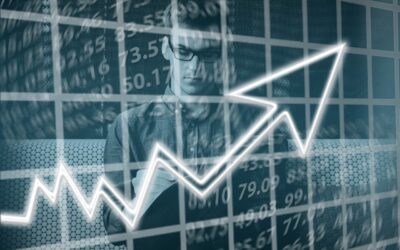Introduction
A. Definition of digital transformation in the art market
Digital transformation in the art market refers to the profound changes brought about by the integration of technology into various aspects of the industry. It encompasses the adoption of e-commerce and fintech solutions that revolutionize the process of buying, selling, and authenticating artworks.
B. Importance of technology in the art industry
Technology plays a pivotal role in the art industry, enabling artists, buyers, and industry stakeholders to overcome traditional barriers. It enhances accessibility, streamlines transactions, fosters trust, and facilitates global connectivity. Embracing technology has become essential for artists and industry players to thrive in today’s digital landscape.
E-commerce in the Art Market
A. Growth of online art marketplaces
The art market has witnessed a significant surge in the growth of online art marketplaces. These platforms provide a digital space where artists can showcase their work to a global audience, transcending geographical limitations. Such marketplaces have revolutionized the accessibility of art, allowing buyers from diverse backgrounds and locations to explore and purchase artworks conveniently.
Increased accessibility for buyers
Online art marketplaces have democratized art by breaking down barriers that previously restricted access. Art enthusiasts can now browse and purchase artworks from the comfort of their homes, eliminating the need to visit physical galleries or auction houses. This accessibility has opened doors to art for a wider audience, including those who were previously unable to engage with the art market.
Global reach and expanded customer base
E-commerce platforms provide artists with unparalleled opportunities to reach a global audience. Artists can showcase their creations to potential buyers around the world, expanding their customer base beyond local markets. This global reach enhances exposure and increases the chances of discovering new patrons who appreciate their unique artistic expressions.
B. Benefits of e-commerce for artists
E-commerce offers numerous advantages for artists seeking to promote and sell their artwork.
Opportunity to showcase and sell artwork directly
Online platforms enable artists to showcase their artwork directly to the public without relying solely on traditional galleries or intermediaries. Artists have the freedom to present their creations in their own unique way, effectively expressing their artistic vision. This direct interaction with potential buyers fosters a deeper connection between artists and their audience, facilitating a better understanding and appreciation of the artworks.
Elimination of intermediaries and higher profit margins
By leveraging e-commerce platforms, artists can bypass traditional intermediaries, such as galleries or agents. This allows them to retain more control over their sales, pricing, and negotiations. Consequently, artists can earn higher profit margins, reinvesting in their artistic pursuits and achieving financial sustainability.
C. Challenges and solutions in online art sales
While e-commerce presents new opportunities, it also introduces challenges that must be addressed to ensure a trustworthy and secure online art market.
Building trust and ensuring authenticity
One of the major concerns in online art sales is the authenticity and provenance of artworks. To establish trust, innovative solutions have emerged, including digital certificates of authenticity and blockchain technology. These solutions provide a verifiable record of an artwork’s origin, ownership history, and authenticity, instilling confidence in buyers and combating the risk of fraudulent practices.
Implementing secure payment systems
Secure payment systems are crucial to protect buyers and sellers during online transactions. E-commerce platforms integrate reliable payment gateways that employ encryption and other security measures to safeguard sensitive financial information. This instills trust in buyers, ensuring their transactions are conducted securely and reducing the risk of fraudulent activities.
Fintech in the Art Market
A. Role of financial technology in art transactions
Financial technology (fintech) has revolutionized art transactions, offering efficient and secure solutions for buying and selling artworks.
B. Online payment platforms for art purchases
Simplified and secure transactions
Fintech has given rise to specialized online payment platforms tailored for art purchases. These platforms streamline and simplify transactions, providing a seamless buying experience for art enthusiasts. By utilizing advanced encryption and authentication methods, these platforms ensure secure and fraud-resistant financial transactions.
Integration with existing banking systems
Fintech solutions seamlessly integrate with existing banking systems, bridging the gap between traditional financial institutions and the art market. This integration allows for smooth and efficient financial transactions, enabling buyers and sellers to complete transactions seamlessly while adhering to established financial regulations.
C. Blockchain for art authentication and provenance
Utilizing distributed ledger technology
Blockchain technology has emerged as a revolutionary tool for art authentication and provenance tracking. By leveraging distributed ledger technology, blockchain creates an immutable and transparent record of an artwork’s history, including its origin, ownership, and any changes in its custody. This enhances transparency, establishes trust, and ensures the integrity of the art market.
Enhancing transparency and combating fraud
The utilization of blockchain technology in the art market combats fraudulent activities, such as art forgery and counterfeiting. With blockchain, every transaction and change in ownership is recorded in a tamper-proof manner, enabling buyers to verify the authenticity and provenance of artworks. This increased transparency safeguards the interests of both buyers and sellers, fostering a more trustworthy and reliable art market.
Benefits and Implications of Digital Transformation in the Art Market
A. Democratization of the art market
Artwork accessibility for a wider audience
Digital transformation has democratized the art market by eliminating geographical barriers and making art accessible to a wider audience. Online platforms enable individuals from all corners of the world to explore and appreciate artworks, irrespective of their physical location. This accessibility has transformed the art market into a more inclusive and diverse space.
Opportunity for emerging artists to gain recognition
Digital transformation has opened doors of opportunity for emerging artists seeking recognition. Online platforms provide a level playing field, allowing artists to showcase their work and gain exposure without the need for extensive networks or the backing of established galleries. Emerging artists can connect directly with art enthusiasts and collectors, increasing their chances of gaining recognition and building a sustainable artistic career.
B. Challenges for traditional art galleries and auction houses
Adapting to changing customer preferences and behaviors
Traditional art galleries and auction houses face challenges in adapting to the evolving preferences and behaviors of art buyers. As more individuals turn to online platforms, galleries must reimagine their role, creating unique experiences that complement the digital art market. This may involve integrating technology within physical spaces to enhance engagement or offering specialized services that cater to the evolving needs of art buyers.
C. Need for digitization and embracing technology
In order to stay relevant in the digital era, traditional art galleries and auction houses must embrace technology and embark on a journey of digitization. This involves leveraging digital tools and platforms to enhance their operations, expand their reach, and engage with a broader audience.
By embracing technology, galleries can leverage virtual galleries, online exhibitions, and interactive experiences to complement their physical spaces. This integration allows them to provide unique and immersive art encounters that go beyond the limitations of physical exhibitions. Additionally, embracing technology enables galleries to offer online bidding options, live streaming of auctions, and virtual tours, catering to the preferences and convenience of modern art buyers.
V. Future Trends and Predictions in the Digital Art Market
A. Artificial intelligence in art curation and recommendation
Personalized art experiences and recommendations
Artificial intelligence (AI) holds great potential in transforming art curation and recommendation processes. AI algorithms can analyze vast amounts of data, including art preferences, historical trends, and user behavior, to offer personalized art experiences and recommendations. This customization allows art enthusiasts to discover artworks that resonate with their unique tastes and preferences, enhancing their engagement and satisfaction.
Identifying emerging artists and trends
AI can also play a crucial role in identifying emerging artists and trends within the digital art market. By analyzing patterns and data from various sources, AI algorithms can spot emerging artistic styles, innovative techniques, and rising talents. This not only benefits collectors and art enthusiasts by enabling them to discover fresh and exciting artworks but also provides emerging artists with increased exposure and recognition.
B. Virtual and augmented reality in art exhibitions
Immersive and interactive art experiences
Virtual and augmented reality (VR/AR) technologies offer immense possibilities for creating immersive and interactive art experiences. Through VR/AR, art enthusiasts can explore virtual galleries, walk through exhibitions, and interact with artworks in a three-dimensional space. These technologies enrich the viewer’s engagement by providing a more intimate and multisensory encounter, blurring the boundaries between the physical and digital realms.
Overcoming geographical limitations
VR/AR technologies also overcome geographical limitations, allowing individuals from anywhere in the world to experience art exhibitions and cultural events. This global accessibility enhances the reach of artists, galleries, and institutions, enabling them to connect with audiences on a global scale. VR/AR exhibitions open up new avenues for collaboration and cultural exchange, fostering a vibrant and interconnected art community.
VI. Conclusion
In conclusion, digital transformation is reshaping the art market in remarkable ways, driven by the integration of e-commerce and fintech solutions. E-commerce platforms have increased accessibility, allowing a wider audience to explore and purchase artworks while providing artists with direct exposure and higher profit margins. Fintech innovations have streamlined transactions, ensured trust and security, and introduced blockchain technology to authenticate and track artworks.
The benefits of digital transformation include the democratization of the art market, enabling wider access to artworks, and providing opportunities for emerging artists to gain recognition. However, traditional art galleries and auction houses face the challenge of adapting to changing customer preferences and must embrace technology to stay relevant.
Looking ahead, artificial intelligence will revolutionize art curation and recommendation processes, while virtual and augmented reality will offer immersive and global art experiences. The future of the digital art market is promising, with continued growth and exciting possibilities for artists, buyers, and industry stakeholders.
Embracing technology is crucial for artists, buyers, and industry stakeholders to navigate the digital transformation and seize the opportunities it presents. By embracing technology, the art market can continue to thrive, connecting people, cultures, and artistic expressions in the digital age.
Read about our post on enhancing supply chain efficiency: e-commerce and fintech solutions in manufacturing and logistics here.
Signup now for Free and enjoy unlimited Quotations & Invoices at www.blog.groflex.in




